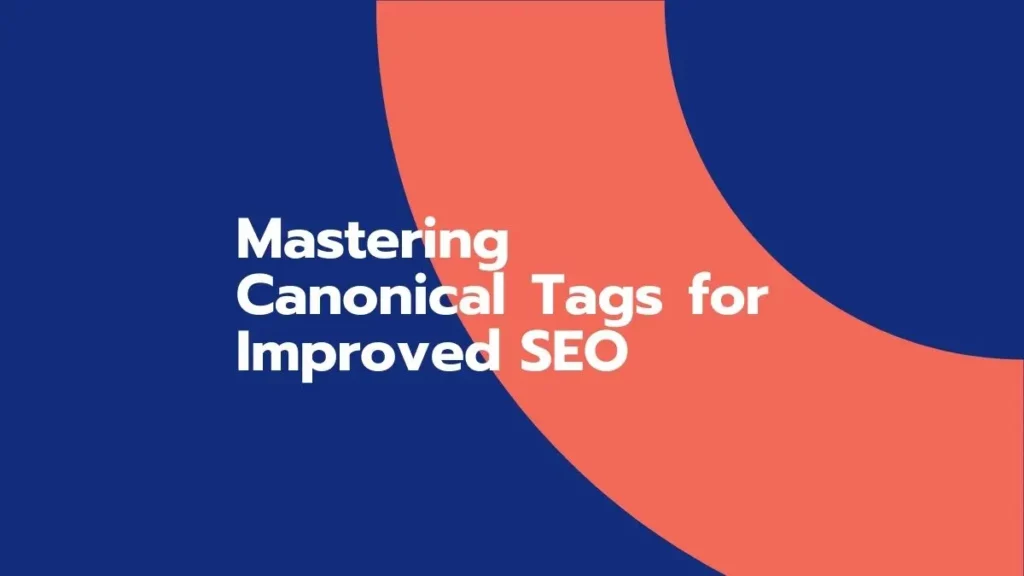
Mastering Canonical Tags for Improved SEO
Do you need help getting your website noticed in search engines? Do some site pages seem overlooked or ignored while others need to be more visible? This may mean that you have duplicate content issues—and they could hurt how well search engines rank your site.
Duplicate content is when the same content appears on multiple website pages or in different places across the web. It needs to be clarified for search engines and can lead to lower rankings and less visibility for your website.
Understanding Duplicate Content
Duplicate content appears when the same or similar words and phrases are used on multiple pages of a website or different websites. Duplication can occur for various reasons, such as:
- Product pages with similar content
- Printer-friendly versions of web pages
- Pages with session IDs
- Pages with varying parameters of URL
- Multiple versions of the same page on different domains
Duplicate content can confuse search engines, making it difficult for them to determine which version of the content should appear in search results. This may lead to lower rankings and reduced traffic for your site.
To resolve duplicate content issues, you need to identify them first. Then, you can use Google Search Console or third-party SEO tools to detect the same content on your website.
How Canonical Tags Work
Canonical tags tell search engines which version of a web page’s content is most important or authoritative.
To avoid duplicate content, you can use a canonical tag. For example, if two pages have the same range, add this tag to one of them as an instruction for search engines: index only that page and not others with similar content.
To implement a canonical tag, add the rel= “canonical” attribute to the HTML header of your preferred version of content—whether it’s an index page or archive.
Best Practices for Using Canonical Tags
Correctly using Canonical tags can improve your website’s SEO—but it’s essential to use them correctly. Here are some best practices for using canonical tags:

Use Canonical Tags Only When Necessary
Canonical tags that are not self-canonicalized should only be used if your website has significant duplicate content. For example, the canonical tags may be unnecessary if it is slightly different or only a few pages with the same content.
Use Canonical Tags Consistently.
To ensure that search engines recognize your canonical tags, include them on every page and ensure that the tag points to the correct material version.
Use Canonical Tags for Dynamically Generated Content.
If your website generates content dynamically, such as e-commerce product pages, it is essential to use canonical tags to ensure that search engines only index the preferred version of a piece of content.
Other Strategies to Avoid Duplicate Content Issues
Although canonical tags can help prevent duplicate content issues, there are other strategies you can use to improve your website’s SEO. Here are some additional techniques:
Use 301 redirects
If you have multiple versions of the same page on your website, you can use 301 redirects to direct users and search engines toward the preferred understanding. This ensures that search engines only index the selected version—avoiding penalties for duplicate content.
Use the Noindex Tag.
If you have pages on your website that you don’t want search engines to index, the noindex tag will prevent them from appearing in search results. This can be useful for pages like privacy policies—which aren’t intended to rank in search results anyway!
Use Parameter Handling in Google Search Console.
Suppose your website generates content dynamically, such as e-commerce product pages with different URL parameters. In that case, you can use parameter handling in Google Search Console to tell search engines how to process your site’s URLs.

Closing Notes
Duplicate content can help your website’s SEO and lead to higher rankings. Canonical tags are a powerful tool for avoiding duplicate content issues—and improving your website’s SEO.
Using canonical tags and following best practices will ensure that search engines only index the preferred version of your content and avoid penalizing you for duplicate content.
You can use several strategies as part of an effective duplicate content strategy, including canonical tags, 301 redirects, and the noindex tag. Combining these strategies will ensure your website is optimized for search engines and improve its visibility in online searches.
Digital Results is happy to help with your digital marketing needs. Just get in touch for a free 30-minute consultation—one of our experts will walk through this analysis process and identify any potential issues that may be holding back your search engine optimization (SEO).






